| Image | Common name | Scientific name | Distribution |
|---|
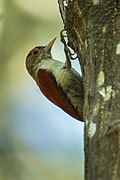 | Scarlet-backed woodpecker | Veniliornis callonotus | Colombia, Ecuador and northern Peru |
 | Yellow-vented woodpecker | Veniliornis dignus | Colombia, Ecuador, Peru, and Venezuela |
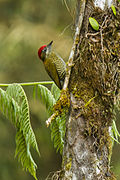 | Bar-bellied woodpecker | Veniliornis nigriceps | Bolivia, Colombia, Ecuador, and Peru. |
 | Little woodpecker | Veniliornis passerinus | South America east of the Andes |
 | Dot-fronted woodpecker | Veniliornis frontalis | Argentina and Bolivia. |
 | White-spotted woodpecker | Veniliornis spilogaster | Brazil, Uruguay, eastern Paraguay and northeastern Argentina. |
 | Blood-colored woodpecker | Veniliornis sanguineus | Guyana, Suriname, and French Guiana |
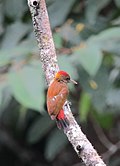 | Red-rumped woodpecker | Veniliornis kirkii | Costa Rica south and east to Ecuador, Venezuela, Trinidad and Tobago |
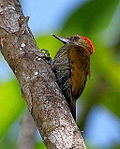 | Red-stained woodpecker | Veniliornis affinis | eastern Brazil and the Amazon Basin. |
| Chocó woodpecker | Veniliornis chocoensis | Colombia and Ecuador. |
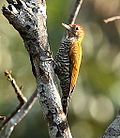 | Golden-collared woodpecker | Veniliornis cassini | northern Brazil, the Guianas, Venezuela and far eastern Colombia. |
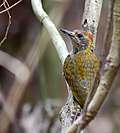 | Yellow-eared woodpecker | Veniliornis maculifrons | eastern Brazil. |
 | Striped woodpecker | Veniliornis lignarius– formerly in Picoides [7] [8] | southwestern South America. |
 | Checkered woodpecker | Veniliornis mixtus– formerly in Picoides [7] [8] | eastern South America. |
|





















